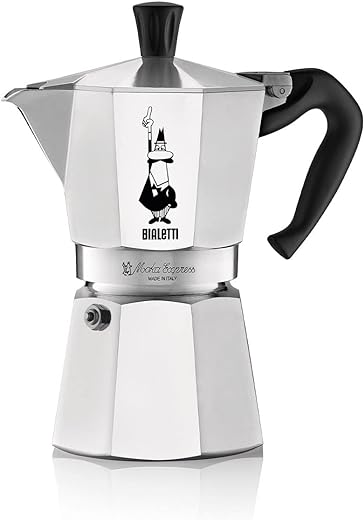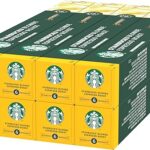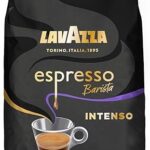The step-by-step guide “How to choose the right grind size for a Moka pot” is designed to assist coffee enthusiasts in achieving the perfect brew using this classic stovetop coffee maker. By providing detailed instructions on selecting the ideal grind size, the guide aims to help individuals brew strong and flavorful Moka pot coffee.
Optimal Coffee Grind Size for Various Brewing Techniques
Understand the Moka Pot
Learn about how a Moka pot works – it uses steam pressure to brew coffee, which means grind size plays a crucial role in the brewing process. To ensure a successful brew, grind your coffee beans to a medium-fine consistency. Using a grinder, aim for a texture similar to table salt. Remember, the grind size affects the overall flavor of your coffee, so finding the right balance is key.When filling the Moka pot’s basket, make sure it’s filled evenly without packing the coffee grounds too tightly. This allows for proper water flow during the brewing process. Additionally, use fresh, cold water in the bottom chamber of the Moka pot to produce the steam pressure needed for brewing. Avoid using boiling water as this can result in burnt coffee. By understanding the role of grind size in the Moka pot brewing process, you can achieve a delicious and flavorful coffee experience.
Grind Size Options
Explore different grind sizes – from fine to coarse. The right grind size will affect the flavor and strength of your coffee.
- Fine Grind: Enhances the intensity and richness of espresso or Turkish coffee. Achieve this consistency similar to table salt.
- Medium Grind: Ideal for drip coffee makers. The texture should resemble beach sand to ensure even extraction.
- Coarse Grind: Perfect for French press or cold brew. Aim for a consistency like coarse sea salt to prevent over-extraction.
Experiment with various grind sizes to find the perfect balance for your preferred coffee brewing method. Adjust the grind size to achieve the desired flavor profile and strength in each cup.
Fine vs. Coarse Grind
Understand the impact of fine and coarse grinds on your Moka pot coffee. Remember, finer grinds can lead to over-extraction, while coarser grinds may result in under-extraction. When using a Moka pot, ensure that you grind your coffee beans to a medium consistency to achieve the best results. To avoid over-extraction, use a coarser grind that resembles sea salt. This will prevent your coffee from turning bitter. To prevent under-extraction, opt for a slightly finer grind, similar to table salt. This will ensure proper extraction and a flavorful cup of coffee. Adjust your grind size based on the taste of your brewed coffee – finer grinds for a stronger taste and coarser grinds for a milder flavor. By understanding the impact of fine and coarse grinds on your Moka pot coffee, you can tailor your grind size to achieve the perfect cup every time.
Experimentation
Experiment with different grind sizes and brew times to find the perfect combination that suits your taste preferences. Start by adjusting your grinder setting to achieve various grind sizes. Remember, a finer grind results in a stronger flavor, while a coarser grind gives a lighter taste. Next, alter your brew time by adjusting how long the water is in contact with the coffee grounds. Longer brew times lead to a more robust flavor, whereas shorter times yield a milder taste. Keep a record of your adjustments and the corresponding flavors to track your preferences accurately. With each tweak, taste the coffee to determine which combination pleases your palate the most. Enjoy the journey of discovering your ideal grind size and brew time for a personalized coffee experience.
Adjusting Grind Size
Adjust the grind size based on your taste. If the coffee is too bitter, try a coarser grind; if it’s too weak, opt for a finer grind. Start by identifying the current grind size setting on your grinder. To make the grind coarser, adjust the setting towards a higher number. Conversely, to achieve a finer grind, move the setting towards a lower number. Grind a small amount of coffee at the new setting, brew it, and taste the result. Continue adjusting until you find the perfect balance between flavor extraction and strength that suits your preference. Remember, small changes can make a big difference in the taste of your coffee.
Final Tips
Consider factors like bean freshness, water temperature, and grind consistency in addition to grind size for a well-balanced Moka pot brew. When preparing your Moka pot coffee, ensure you are using freshly roasted beans. Fresh beans contribute significantly to the overall flavor profile of your brew. Check the water temperature carefully; ideally, it should be around 200°F (93°C) for optimal extraction. Maintain grind consistency by using a quality grinder to achieve a uniform particle size. Inconsistencies in grind size can result in an uneven extraction, affecting the taste of your coffee. By paying attention to these additional factors alongside grind size, you can elevate the quality of your Moka pot brew to a new level of excellence.
Taste-testing your perfect brew
In conclusion, selecting the appropriate grind size for your Moka pot is key to achieving a delightful coffee experience. By exploring various grind sizes, you can discover the ideal balance and savor a rich and flavorful cup each time you brew. Experimentation is key in mastering the art of Moka pot coffee brewing.
Essential Equipment Needed
Brewing Perfection Unlocked
Brewing the Perfect Cup with Your Moka Pot
- Grind your coffee beans to a medium-fine consistency, similar to table salt
- Fill the bottom chamber of the Moka pot with hot water up to the safety valve
- Place the ground coffee into the filter basket, level it off, and then insert the basket into the bottom chamber
- Screw on the top chamber securely to the bottom chamber
- Place the Moka pot on a stovetop over medium heat and wait for the coffee to percolate up into the top chamber. Remove from heat when the coffee stops bubbling. Enjoy your freshly brewed coffee!
Moka Pot FAQs
The Moka pot, also known as a stovetop espresso maker, was invented by Italian engineer Alfonso Bialetti in 1933. It quickly became popular in Italy and around the world for its ability to brew coffee that is stronger and more concentrated than traditional drip coffee. The Moka pot design has remained relatively unchanged since its creation, and it is still widely used by coffee lovers who appreciate its simplicity and rich, flavorful coffee it produces.
A Moka pot works by utilizing steam pressure to brew coffee. Water in the lower chamber is heated, creating steam that pushes through the coffee grounds in the middle chamber and then up into the top chamber as brewed coffee. This method produces a strong and flavorful coffee similar to espresso.
No, a Moka pot cannot be used on an induction stove. Moka pots are typically made of aluminum or stainless steel, which are not compatible with induction cooktops that require magnetic materials like cast iron or magnetic stainless steel to generate heat.
Yes, you can use the same Moka pot for different types of coffee beans. Moka pots are versatile and can accommodate various coffee bean types and blends. Just make sure to clean the Moka pot thoroughly between uses to prevent flavor contamination.
Brewing coffee with a Moka pot typically takes around 5 to 10 minutes, depending on factors such as the size of the Moka pot, heat source, and desired strength of the coffee. It is a relatively quick and straightforward process compared to other brewing methods.
To get the best coffee from a Moka pot, here are some tips:
- Use freshly ground coffee beans for the best flavor.
- Grind the coffee to a fine consistency, similar to table salt.
- Fill the Moka pot with hot water to help maintain a consistent brewing temperature.
- Fill the coffee basket with coffee grounds but avoid tamping them down.
- Assemble the Moka pot properly to ensure a tight seal.
- Brew the coffee on medium heat to avoid burning the coffee.
- Remove the Moka pot from the heat as soon as you hear the gurgling sound to prevent over-extraction.
- Pour and enjoy your freshly brewed Moka pot coffee!
The best size Moka pot for making a single serving of coffee is typically the 1-cup size. This size is ideal for brewing a single shot of espresso-style coffee, which is around 1 to 2 ounces. It allows you to make just the right amount of coffee for one person.
Yes, a Moka pot is generally considered easy to use for beginners. It involves a simple brewing process that requires water, coffee grounds, and heat. With a bit of practice and following the instructions, most beginners can quickly learn how to brew coffee using a Moka pot.
Some common mistakes people make when using a Moka pot include:
- Using too much or too fine coffee grounds, which can lead to a bitter taste.
- Not cleaning the Moka pot properly, which can affect the flavor of the coffee.
- Overfilling the water chamber, which can result in weak or over-extracted coffee.
- Heating the Moka pot on too high of a heat, causing the coffee to brew too quickly and taste burnt.
- Tightly packing the coffee grounds in the filter, which can result in a slow extraction process and bitter coffee.
The best type of coffee grind for a Moka pot is a fine grind, similar to table salt. This allows for proper extraction of flavor and the right balance between not being too coarse or too fine, which can affect the overall taste of the coffee.
Yes, you can make espresso with a Moka pot. While it doesn’t produce true espresso as made by an espresso machine, a Moka pot brews a strong and concentrated coffee similar to espresso. The key difference lies in the pressure used for extraction, with espresso machines reaching higher pressures than Moka pots. Nonetheless, Moka pots are a popular and affordable alternative for making espresso-like coffee at home.












I’ve found that preheating the Moka pot before brewing can help maintain a consistent temperature during the extraction process, resulting in a more balanced and flavorful cup of coffee. This tip might be useful to add to the ‘Final Tips’ section of the guide.
I’m a bit confused about how to properly adjust the grind size. Can you clarify the process of changing grind size and the indicators to look for to know if the adjustment is correct?
When adjusting the grind size for your Moka pot, start by making small changes and noting the taste differences in your coffee. If it’s too bitter, try coarsening the grind; if it’s too weak, go finer. Keep experimenting to find your ideal grind size.
I tried a fine grind as suggested, but my coffee ended up tasting bitter. Any troubleshooting tips for avoiding bitterness with a fine grind?
I found that using a medium grind size actually works well for my Moka pot, giving a balance between the boldness of a fine grind and the clarity of a coarse grind. Experimenting with different sizes helped me find my perfect cup.
Could you provide some advanced tips on adjusting grind size based on the type of coffee beans being used? I’m curious to explore how different beans may require slight adjustments in grind size.